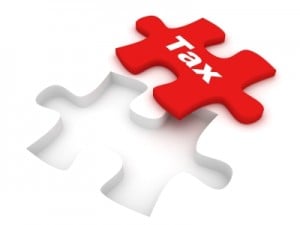Tax Brackets – Tax Calculator
- Arnold Shields

- Nov 21, 2012
- 2 min read
Updated: Jun 2
What tax bracket are you? Australian individual income tax has a sliding scale of tax depending on your level of income ranging from 0% to 45%. The top tax bracket of 45% starts on earnings over $180,000, so it only applies to around 1% of the working population.
As accountants, the tax bracket is important as it represents the marginal rate of tax that applies if the individual earned an addition $1 in earnings. If a person is in the top tax bracket, then each additional $1 is taxed at 45%. We then look at what alternatives are available to them in terms of income splitting, through trusts, companies and their family members. Depending upon how their corporate structure is organised will affect what is available to them. We might try and divert income to companies (taxed at 30%) or superannuation funds (taxed at 15%) of their family members (taxed between 0% and 45%).
As tax rates change each year, a great tool is the Tax Calculator Addin for Excel, which enables you with a few simple excel formulas show the marginal rate of tax and the average rate of tax. For example:
= MarginalRate2012( taxable Income) shows the marginal rate of tax (or Tax Bracket) at that level of income. It could be shown as =MarginalRate2012(100000) or =marginalRate2012(B6) to reference another cell.
=AvgTaxRate2012(taxableIncome) shows the average rate of tax. For accountants, this is a very useful formula to help and explain to clients how how tax they are actually paying and how you have helped them lower their average rate of tax.
The Tax Calculator Addin for Excel is a very powerful tool for use in Microsoft Office 2007 and Office 2010 excel spreadsheets. You just save the file once and you will be able to use the tax calculator adding in any excel spreadsheet, saving you hours of time and frustration in calculating your tax bracket.
Disclaimer:
The information provided in this article is general in nature and does not constitute personal financial, legal or tax advice. While every effort has been made to ensure the accuracy of this content at the time of publication, tax laws and regulations may change, and individual circumstances vary. Dolman Bateman accepts no responsibility or liability for any loss or damage incurred as a result of acting on or relying upon any of the information contained herein. You should seek professional advice tailored to your specific situation before making any financial or tax decision.



